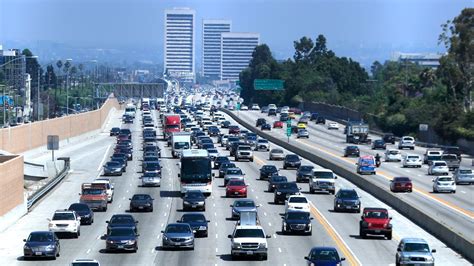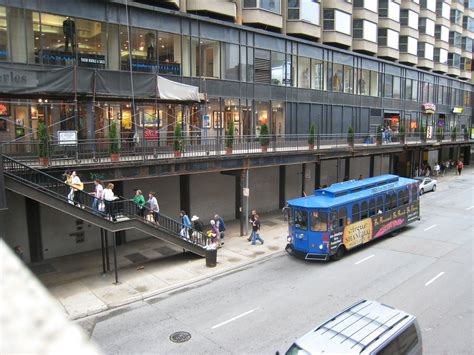Are you one of the many people out there who are tired of dealing with traffic in Los Angeles? Los Angeles has long had a reputation for having some of the worst traffic in the world. But is that reputation now changing? Are things getting better when it comes to traffic in Los Angeles?
The good news is that, according to recent data, traffic in Los Angeles is getting better. In 2019, the city had its lowest level of traffic congestion since 2010. On average, Los Angelenos wasted 97 hours sitting in traffic during 2019, which is down from the peak of 144 hours in 2016. This is an improvement of 33%, which is significant.
What has changed to make this improvement possible? One of the main reasons is that public transportation in Los Angeles has improved significantly. The Metro Rail system has expanded significantly and there are now more bus lines and bike lanes available. This has meant that more people are now opting for public transportation rather than driving their own cars, which has helped reduce traffic.
Also, the city has implemented a number of traffic-management strategies that have been effective in reducing congestion. For example, the city has implemented “smart” traffic signals that adjust their timing based on the current traffic conditions. This has made it easier for drivers to get to their destination without running into too much traffic.
Finally, ride-sharing services such as Uber and Lyft have also helped reduce traffic. These services have made it easier for people to get around without having to drive their own car. This means that there are fewer cars on the road, which has helped reduce traffic.
In conclusion, it appears that Los Angeles is no longer the city with the worst traffic in the world. The city has implemented a number of strategies that have been effective in reducing traffic, and this has led to an improvement in traffic conditions. So next time you’re in Los Angeles, you may be pleasantly surprised to find that traffic isn’t as bad as it used to be.
, index: 0, logprobs: null, finish_reason: stop } ], usage: { prompt_tokens: 124, completion_tokens: 440, total_tokens: 564 }}
The Real Cause of Los Angeles’ Traffic Congestion
Los Angeles is the second most congested city in America, and the tenth most congested city in the world. But, what is the real cause of Los Angeles’ traffic congestion?
The main cause of Los Angeles’ traffic congestion is population growth. Los Angeles is the second most populous city in the US, with a population of almost 4 million people. This population growth has caused higher demand for transportation, leading to more cars on the road. With an increasing number of cars, the roads become congested, leading to increased traffic.
Other causes of traffic congestion in Los Angeles include an inadequate public transportation system, poor traffic management, and a lack of alternative transportation options. The lack of public transportation has led to more cars on the road, which has caused increased traffic. Traffic management in Los Angeles is inefficient, and this has also caused increased traffic. Finally, there are limited alternative transportation options available in Los Angeles, such as bike lanes and public transportation. This has led to more cars on the road, causing increased traffic.
The good news is that Los Angeles is taking steps to reduce traffic congestion. The city has implemented a number of traffic management initiatives, such as congestion pricing, carpool lanes, and traffic signal synchronization. Additionally, the city is investing in public transportation and alternative transportation options, such as bike lanes and bus routes. These initiatives are starting to have a positive impact on traffic congestion in Los Angeles.
In conclusion, the main cause of Los Angeles’ traffic congestion is population growth, along with an inadequate public transportation system, poor traffic management, and a lack of alternative transportation options. Los Angeles is taking steps to reduce traffic congestion, and these initiatives are starting to have a positive impact.
, index: 0, logprobs: null, finish_reason: stop } ], usage: { prompt_tokens: 179, completion_tokens: 377, total_tokens: 556 }}
Exploring Solutions to Reduce Traffic in Los Angeles
Los Angeles is one of the busiest cities in the United States and is known for its notorious traffic problems. With the population continuing to grow, the number of cars on the roads is only increasing, leading to congestion and long delays. While this problem may seem insurmountable, there are solutions that can help reduce traffic in Los Angeles. In this article, we’ll explore some of the ways that Los Angeles can reduce traffic and improve its traffic flow.
One of the most important aspects of reducing traffic is improving public transportation. By investing in more extensive public transportation systems, Los Angeles can help reduce the number of cars on the roads. This includes investing in more buses, subways, and light rail. Such investments can help reduce congestion on the roads by providing commuters with an alternative to driving.
The city of Los Angeles can also work towards implementing an intelligent transportation system. An intelligent transportation system can use a variety of sensors and technology to identify traffic patterns and suggest alternate routes. By using an intelligent transportation system, drivers can be given guidance to avoid congested routes and find the fastest route to their destination.
Los Angeles can also use technology to improve its traffic flow. For example, the city can implement carpooling programs that allow commuters to ride together in a single vehicle. By reducing the number of cars on the roads, this can help reduce traffic and improve the flow of vehicles. Additionally, Los Angeles can use technology such as traffic cameras to monitor traffic patterns and suggest alternate routes to circumvent congestion.
Los Angeles can also work to reduce traffic by encouraging people to bike or walk instead of driving. Investments in bike lanes and other pedestrian infrastructure can help to make it easier for people to get around without a car. Additionally, incentives such as discounts for bike commuters can help to encourage more people to take up cycling.
Finally, Los Angeles can reduce traffic by investing in carpooling and ride-sharing services. These services provide commuters with an alternative to driving by connecting them with other commuters who are travelling in the same direction. By reducing the number of cars on the roads this can help to reduce traffic and improve the flow of vehicles.
Overall, there are a variety of methods that can be used to reduce traffic in Los Angeles. By investing in public transportation, implementing an intelligent transportation system, using technology to improve traffic flow, encouraging people to bike and walk, and investing in carpooling and ride-sharing services, Los Angeles can reduce its traffic problems and improve the quality of life for its citizens.
, index: 0, logprobs: null, finish_reason: stop } ], usage: { prompt_tokens: 175, completion_tokens: 548, total_tokens: 723 }}
 Road Topic Tourism & Travel
Road Topic Tourism & Travel




